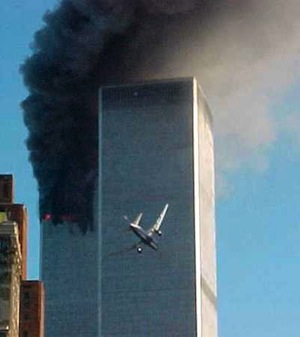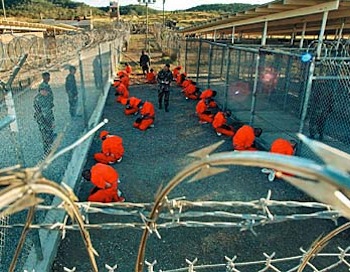Ten years after 9-11 ... Congressional resolution allows US courts to refuse habeas and to hold prisoners indefinitely without charge ... No evidence of wrongdoing required ... Stephen Keim's column
 The United States Court of Appeals for the District of Columbia circuit continues to hear appeals from decisions of District Court judges on habeas corpus applications.
The United States Court of Appeals for the District of Columbia circuit continues to hear appeals from decisions of District Court judges on habeas corpus applications.
This is made possible by the decision of the Supreme Court in Boumedienne v Bush 553 U.S. 723 (2008).
Boumedienne's case put an end to the legal black hole that Bush legal strategists had designed and, with the help of a cooperative Congress, laboured to keep in place.
The District Court has heard a large number of habeas applications. Many have been successful and as a result these detainees have found freedom, either in their countries of origin or other places prepared to accept them.
Some have been unsuccessful. The government, despite its flawed evidence gathering strategies, has managed to satisfy the preponderance of evidence test laid down by the District Court and establish a lawful basis to continue holding particular detainees.
As we approach the tenth anniversary of the September 11 attacks and the Congressional resolution of a week later to use military force against those involved in the attacks, it is useful to look at the state of the law that is still applied in determining whether people can continue to be lawfully detained.
In recent months, the DC Circuit Appeals Court decided the case of Al-Madhwani v Obama (Case no 10-5172) and confirmed the District Court's refusal of the habeas application.
The authority to detain Al-Madhwani and other detainees is derived from that Congressional Resolution of September 18, 2001.
The resolution is known as the Authority to Use Military Force and, relevantly, it reads:
"That the President is authorized to use all necessary and appropriate force against those nations, organizations, or persons he determines planned, authorized, committed, or aided the terrorist attacks that occurred on September 11, 2001, or harbored such organizations or persons, in order to prevent any future acts of international terrorism against the United States by such nations, organizations or persons."
As the court in Al-Madhwani v Obama explains, the doctrines developed in the habeas applications are to the effect that the authority of the AUMF covers at least those who were part of the forces associated with Al Qaeda or the Taliban or those who purposefully and materially supported those forces in hostilities against US coalition partners.
 The inquiry then becomes one of determining whether a detainee, maybe 10 years earlier, was part of Al Qaeda or the Taliban. If he is found to have been his continued detention a decade later has been lawfully authorised by the AUMF.
The inquiry then becomes one of determining whether a detainee, maybe 10 years earlier, was part of Al Qaeda or the Taliban. If he is found to have been his continued detention a decade later has been lawfully authorised by the AUMF.
The case against Madhwani was that he arrived in Afghanistan in in August 2001. He stayed at the Arab guesthouse in Kandahar. His passport was confiscated and he was required to go into the mountains for physical conditioning and small arms training.
After the attacks on September 11, the camp was closed down and he and other recruits were given permission to leave.
He wandered with two trainers and several recruits through a succession of Afghanistan cities. After a while the recruits were abandoned by the trainers. They arrived in Kabul with other recruits three days before it fell to the Northern Alliance. They then fled with civilian refugees to Pakistan.
Madhwani received his passport back by a chance discovery - an explanation the court rejected and treated as a lie and admissible against him as evidence he was part of Al-Qaeda.
The group hid at various locations until being captured nearly a year later by Pakistani security forces at an apartment building in Karachi.
Madhwani surrendered peacefully but two other of the group resisted and were shot dead in a two-and-a-half hour gun battle with the security forces.
The Appeals Court stated that it relied on no evidence obtained from coercive interrogation, but relied mainly on Madhwani's own testimony.
It held that the finding of the District Court that Madhwani functioned under the command structure of Al-Qaeda was available on the evidence and that such a determination was sufficient (but not essential) to find Madhwani was part of Al-Qaeda.
Accordingly, under the AUMF, the government was authorised at law to continue to detain him.
It is not argued here that the Court's finding that Madhwani was part of Al-Qaeda is wrong. There may be other competing conclusions but, applying a balance of probability test the conclusion would appear to be available.
Rather, it is reliance on the AUMF as authority for continued detention nearly 10 years after its passage (and after nine years of detention) that gives cause for concern.
There is no evidence that Madhwani knew of the September 11 attacks ahead of time or had any role in them.
There is no evidence that he took any action against any United States soldier or ally. He was present in Afghanistan before the United States had any role in the conflict in that country. There is no evidence that he has committed any criminal act.
Despite that, the United States justice system operates on the basis that the Congressional resolution is sufficient to authorise continued detention, after a decade.
There seems no reason on the face of the judgment that it will not continue to be valid for another decade.
There is no sign that Congress will revisit its resolution and require actual wrongdoing on the part of detainees to justify continued detention.
The torture at Guantanamo and Abu Ghraib may be a high point of wrongdoing in terms of treating prisoners of war.
However, the continued detention of prisoners like Madhwani, indefinitely, raises its own moral challenges.
Stephen Keim